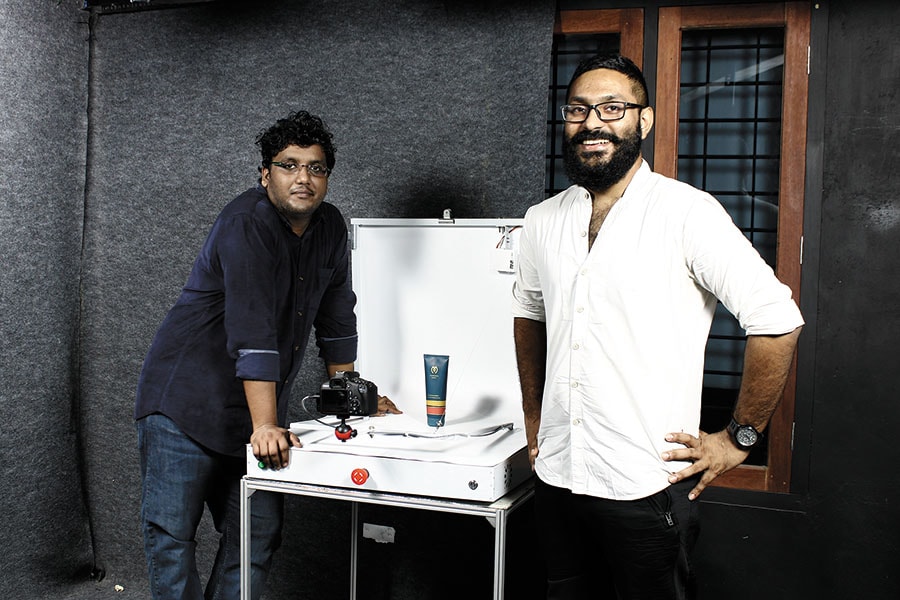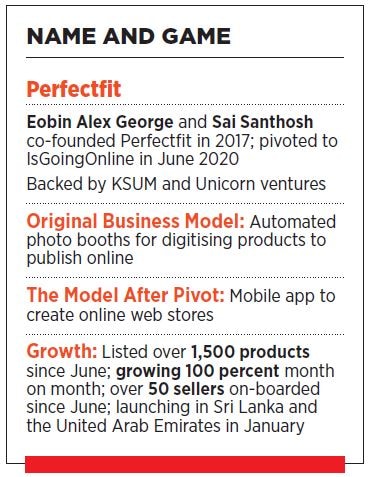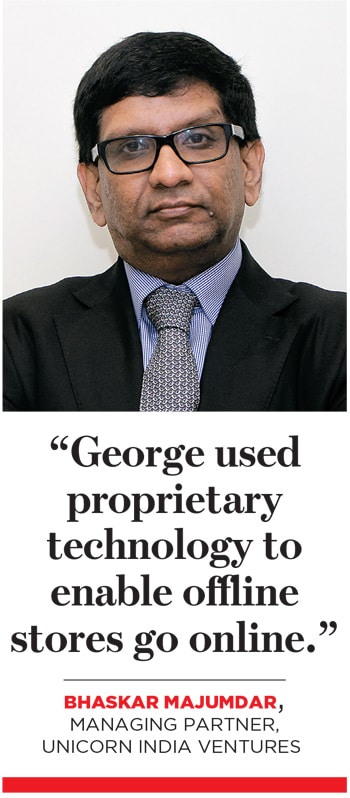
How we survived: The Jack of all pivots
After multiple pivots over the last few years, Eobin Alex George, teacher, researcher, entrepreneur, seems to have found his mojo with IsGoingOnline. Has he?
 Eobin Alex George (right), CEO, and Sai Santhosh, CTO of Perfectfit, that pivoted to IsGoingOnline in June
Eobin Alex George (right), CEO, and Sai Santhosh, CTO of Perfectfit, that pivoted to IsGoingOnline in June
'How We Survived' is a series of stories on businesses—big and small—that innovated or pivoted during the coronavirus crisis to survive. For all the stories in this series, click here
Eobin Alex George started his entrepreneurial journey with drones in 2009. Then he switched to employee mode and dabbled with consulting. Next came research, and teaching. By 2017, George was back to entrepreneur mode with Perfectfit and started ultralight pilot-3D scanning photography units and web store creation solutions. “There were a few experiments in between. This summarises the last decade for me,” he makes an honest confession.
Now comes the candid self-assessment. “It was exciting with a fair bit of dramatic failures and a few successes,” says George, whose latest pivot happened in June 2020. IsGoingOnline (IGO) helps small businesses create a simple web store with pre-loaded products.

Sellers download the app, verify phone numbers and click pictures of the product along with product details. They get an ultra-light web store with payment and shipping options which can be shared through WhatsApp, Facebook and Instagram. The solution is free till ₹1 lakh, after which IGO charges a one to five percent commission on sales. “I am now building IGO from my experiences over the last decade,” he says.
For George, life after the latest pivot has started on an encouraging note—from two customers in June to over 50 now and from over a few listed products to over 1,500. George now plans to launch operations in Sri Lanka and the United Arab Emirates next month.
Investors find the pivot encouraging. “We invested in Perfectfit when they were developing a 3D scanner for a custom-made outfit,” recalls Bhaskar Majumdar, managing partner, Unicorn India Ventures. The earlier avatar automated the pre-tailoring process with substantial time-saving. While the company got initial success, it couldn’t scale up. Subsequently, it made changes to its business model. Using 3D scanning technology, it developed the product on-boarding process, and eliminated the need for manual intervention for product addition for ecommerce businesses.
The business started gaining traction and on-boarded customers like BigBasket. The pandemic, however, brought the business to a standstill. The company was dangerously running out of reserves, and was almost on the brink of closure. “That’s when George morphed the business using proprietary technology to enable offline stores to go online without any manual intervention,” says Majumdar.
The challenges still persist. IGO is competing with well-funded startups like Dukaan and KhataBook. Majumdar, though, is not worried. Reason: IGO’s ability to enable offline businesses to go online with a host of other services has helped it generate revenue from day one.

The learnings, and mistakes, too started from the beginning. The biggest was not building minimum viable products (MVPs) to understand how a user perceives a product or if she has a need for it before deciding on an idea. Another crucial learning is failing to look at the global market, and concentrating on solutions for the Indian market.
The entrepreneur explains what went wrong. Coming from a slightly conservative background, George points out, a ‘play-it-safe family’ and 21 years of staying at home provided the context. “I wanted to move out and see the world, and gave myself five years for that,” he recounts. George started trying out whatever he could get his hands on. Even if it meant moving from one product to another. “I was impulsive and liked to sell what I had made,” he says. The right way, he underlines, would have been to engage in extensive market surveys, consult market gurus, build a MVP, get user feedback and then launch.
Not having patience was another glaring mistake. “The projects that I worked on were very broad-based, and I did not have the patience to stick with something for so long,” he confesses. “I always doubted if the product had enough scale.”
Being scared of customer feedback, he lets on, also did no good. It is important to understand the sweet spot and improvise on a solution which can be launched with a customer. “One needs to understand the pulse of the market and users before setting a direction for the product,” he says.
There is another realisation that might help him in his future journey. “Trust your gut feeling.”





